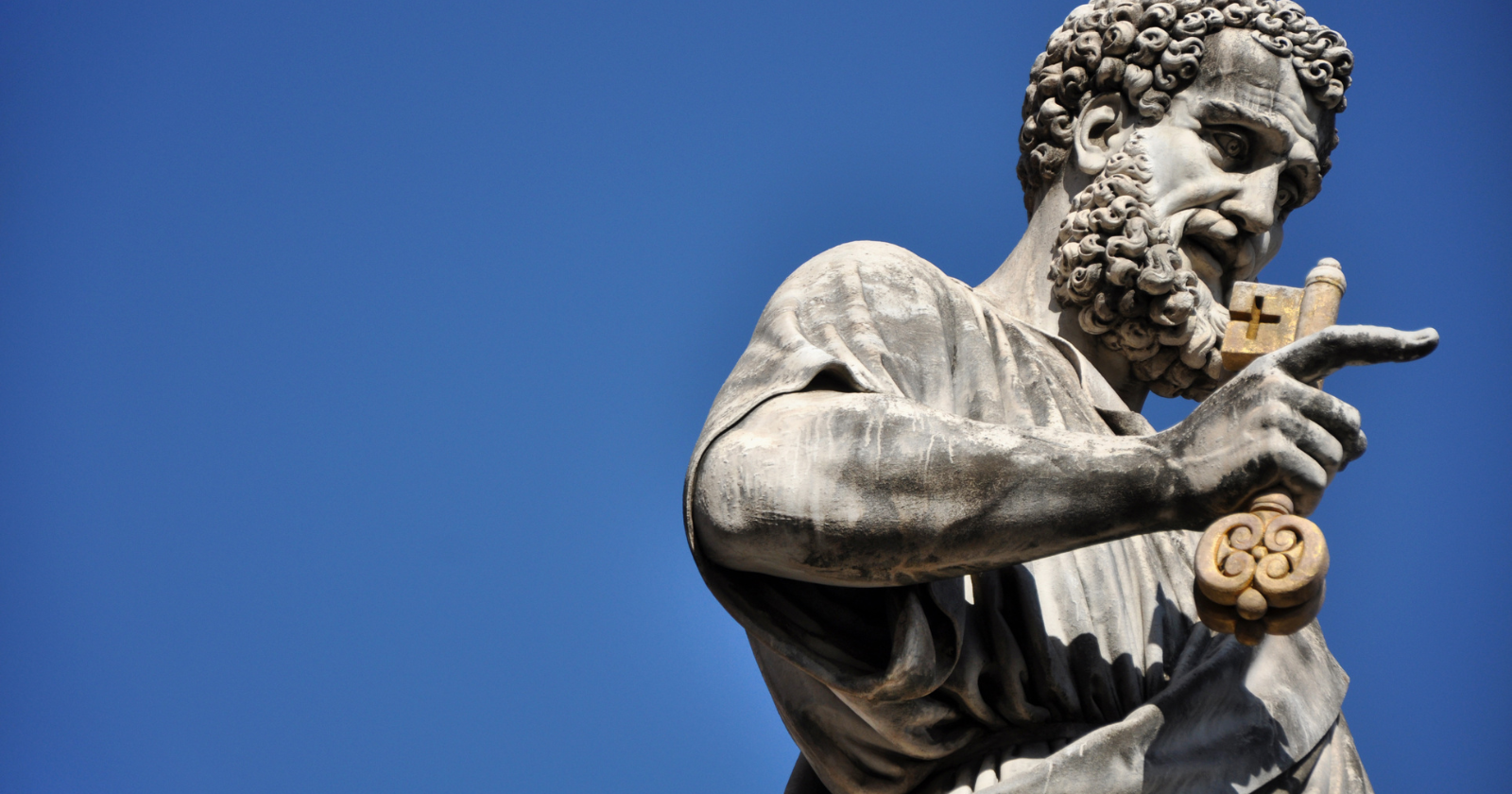“His divine power has given us everything we need for a godly life through our knowledge of him who called us by his own glory and goodness.”
2 Peter 1:3
Facing life’s challenges with faith can often feel like a solo journey. Yet the wisdom of the past speaks directly to our present.
The Second Letter of Peter offers transformative wisdom that can reshape our daily lives and relationships. It emphasizes the power granted to us for living a godly life, rooted in the knowledge of God’s glory and goodness.
This epistle is a guide for cultivating faith, virtue, knowledge, self-control, perseverance, godliness, mutual affection, and love.
In this article, we will explore the essence of Paul’s second letter and how it can can illuminate our path, grounding our daily lives in enduring spiritual truths.
What’s the context of the second letter of Peter?
The Second Letter of Peter is the third of seven catholic or universal letters of the New Testament of the Bible, along with the Letter of James, the First Letter of St. Peter, the First, Second, and Third Letters of John, and Jude.
These letters are so called because they are addressed to the universal Church in general, and not to a specific community such as, for example, the Letter to the Philippians.
This letter, enriched by the use of “Symeon Peter” for its author, taps into Peter’s Jewish heritage and highlights the universality of its message.
Right from the start, Peter distinguishes Jesus Christ as both God and Savior, setting a foundational tone for the discussions that follow.
This concise yet profound letter navigates through the significance of Christ’s teachings, ethical living for believers, and the integrity of Scripture’s interpretation.
By structuring his letter around these pivotal themes, Peter aims to deepen the reader’s understanding of their faith and the lifestyle it necessitates.
Peter’s main message
In this letter, Peter lays out a comprehensive message focusing on the gravity of living a Christian life true to the teachings of Jesus Christ.
In the beginning, he points out the gift of participating in the divine nature through Christ’s grace, urging believers to mirror this gift in their virtues and actions.
The narrative then transitions into a cautionary tale against false prophets and teachers, vividly painting the consequences of deception and moral derailment.
However, it’s not all warnings.
Instead, Peter heartens his readers with the promise of Christ’s second coming, the Parousia, advocating for a life of purity and devotion in anticipation.
Moreover, Peter delves into the correct approach to Scripture, advocating for a communal understanding guided by the Holy Spirit rather than personal interpretation.
6 key themes of Second Peter
1) Divine power and promises
The Second Letter of Peter opens with a greeting from Simon Peter, who identifies himself as a “servant and apostle of Jesus Christ.”
This introduction sets the stage for a letter that deeply explores the themes of divine power and promise.
Peter emphasizes that believers have been granted everything necessary for a life of godliness through their knowledge of God, who called them by His own glory and virtue (1:3).
It’s highlighted that through these divine promises, Christians can participate in the divine nature and escape worldly corruption caused by desire (1:4).
Let’s be honest: this power gives us everything we need for a godly life.
How?
Through knowing God and Jesus, our Lord. As Peter says, through these, we can share in the divine nature.
Yes, you heard that right — we escape the world’s corruption caused by human desires.
2) Living a virtuous life
“Employing all care, minister in your faith, virtue; and in virtue, knowledge; and in knowledge, abstinence; and in abstinence, patience; and in patience, godliness; And in godliness, love of brotherhood; and in love of brotherhood, charity.”
This passage underlines the ladder of Christian virtues that believers should climb.
Starting with faith as the foundation, Peter outlines a progressive path towards charity, the pinnacle of Christian virtues.
Each step is not just an addition but a deepening of one’s character and faith, showing how intertwined knowledge, self-control, perseverance, godliness, and love are in the Christian life.
Peter asserts that these qualities must “be yours and increase,” suggesting that a static faith is insufficient.
Rather, believers are called to a dynamic and growing faith that actively incorporates these virtues.
The presence of these qualities ensures that Christians will be “neither useless nor unfruitful in the true knowledge of our Lord Jesus Christ” (1:8).
Conversely, the lack of these qualities renders one “blind or short-sighted,” having forgotten the purification from their past sins (1:9).
3) The danger of false teachings
In the second chapter of his letter, Peter shifts focus to issue a stern warning about the presence and dangers of false teachers within the Christian community.
He outlines the characteristics of these deceptive individuals and the dire consequences of their actions, both for themselves and those they lead astray.
In fact, he describes these false teachers as bringing in “destructive heresies,” even denying the sovereign Lord who bought them.
This warning about false teachings reveals a truth:
Sometimes, the greatest threat to our faith comes from within our midst, challenging us to be vigilant and discerning.
4) Getting prepared for the day of the lord
“The Lord does not delay his promise, as some regard ‘delay,’ but he is patient with you, not wishing that any should perish but that all should come to repentance.”
2 Peter 3:9
With the Second Coming (Parousia) as a focal theme, Peter poses an implicit question:
Are we living lives that reflect anticipation for the Lord’s return?
This question isn’t meant to induce fear but to inspire reflection on our daily conduct. Living with the end in mind transforms our priorities, choices, and actions.
It’s not about predicting when but about being ready at any moment by leading lives marked by holiness and godliness. This perspective shift challenges readers to evaluate their lives through the lens of eternity.
In general, the anticipation of the Day of the Lord serves as a pivotal reminder of the urgency and importance of leading a life following God’s will.
As believers, he encourages us to:
- Reflect on our spiritual readiness
- Embrace a lifestyle marked by godliness and holiness
- Understand the patience of the Lord as an opportunity for salvation
The message is clear: we must not take lightly the grace given to us. What we should do is to prepare our hearts and minds to find peace at His coming.
5) Divine origin of prophecy
Peter clarifies that the prophecies contained in Scripture are not of private interpretation or human origin.
Instead, they are divinely inspired, as “men spoke from God as they were carried along by the Holy Spirit” (1:20-21).
This statement underscores the authority of Scripture and its foundational role in Christian life.
What’s more, it affirms that the Bible is not just a collection of human writings but a compilation of God-breathed texts that serve as a guide, light, and source of truth for believers navigating through life’s darkness.
Interestingly, Peter references the Transfiguration of Jesus as a majestic event that he and others witnessed.
This event serves as a powerful prophecy, not born from human imagination but as a divine revelation, affirming Jesus as God’s beloved Son.
6) Growing in grace and knowledge
The final admonition from Peter is for believers to “grow in the grace and knowledge of our Lord and Savior Jesus Christ” (3:18).
This growth is portrayed as both a safeguard against deception and as a pathway to experiencing the fullness of life in Christ.
It encapsulates the letter’s overarching themes: living out one’s faith through virtuous living, being vigilant against false teachings, and remaining hopeful and active in one’s spiritual journey while awaiting Christ’s return.
Peter’s closing doxology, “To him be glory both now and forever! Amen,” beautifully encapsulates the ultimate goal of Christian life — to glorify God through all ages.
These closing words serve as a reminder that our spiritual journey is one of continuous progression, where growing in grace and knowledge equips us to navigate life’s challenges with faith and discernment.
Next steps in your faith
As we reflect on the profound teachings of The Second Letter of Peter, it’s clear that this epistle serves not only as a guide for spiritual growth but also as a call to action for believers.
Peter’s words challenge us to look beyond the surface, urging us to cultivate a life that mirrors the virtues and commitments of our faith.
To further engage with the themes of this letter, consider these steps:
- Reflect on the virtues listed in 2 Peter 1:5-7. Assess areas in your life where you can develop these virtues.
- Examine your daily life for influences that may lead you away from the ‘divine nature’ Peter describes. Identify practical measures to resist such influences.
- Revisit the warnings against false teachings in Chapter 2. Strengthen your ability to discern truth by regularly studying scripture and seeking insights from trusted Christian leaders.
- Contemplate the promise of Christ’s return in Chapter 3. Let this anticipation inspire you to live a life of holiness and godliness.
Ultimately, the Second Letter of Peter calls believers to a higher standard of living — a life that mirrors the divine nature of Christ Himself.
By focusing on spiritual growth, godliness, and the anticipation of Christ’s return, believers can navigate their lives with purpose and conviction.














